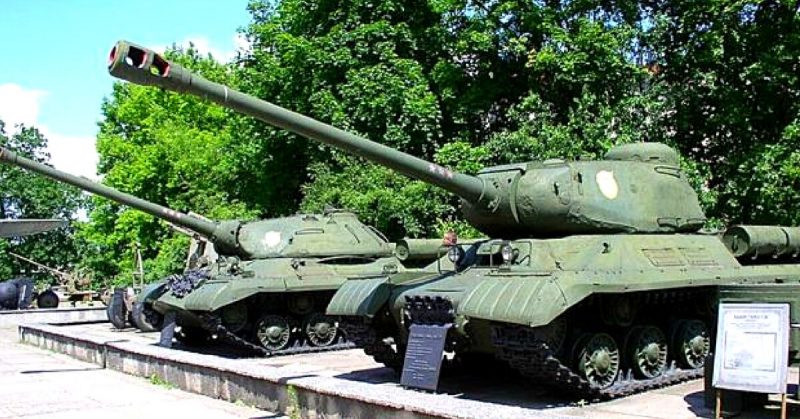The IS tank family was named after Joseph Stalin during WWII. So called because of its massive size, heavy armor, and high-calibre gun it was designed to represent the power of the Soviet Union and its supreme leader. In Cyrillic (the official writing system of Russia and many other Eastern European countries) Stalin’s name is written Ио́сиф Ста́лин, transcribed as Iosif Stalin.
The first IS tank was intended to replace the KV-1 design which by 1943 was becoming obsolete. The KV-1 was a Soviet pre-war designed tank, which, other than having thick armor, was very flawed. It was slow, malfunctions were common, and its gun was the equivalent of the T-34, although the KV-1 was much more expensive to produce.
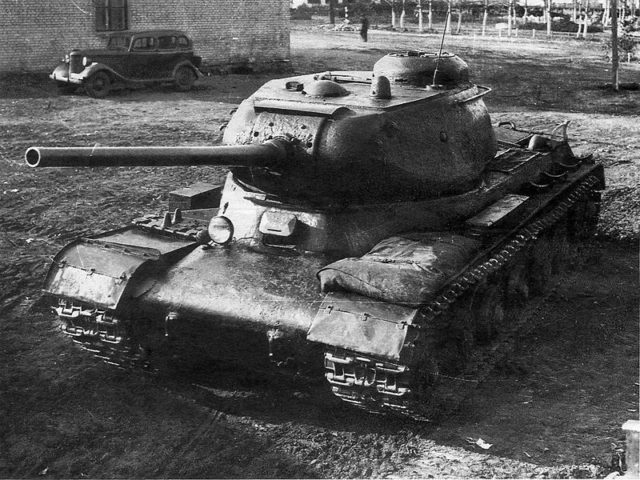
After the Soviets managed to capture one of the German Tiger tanks in 1943, they rushed to build something bigger, stronger, and more powerful.
In January 1944 following a series of temporary modifications on the KV-1, the IS-1 was produced in the Kirov Factory in St. Petersburg. Soon after that an improved version, named simply IS-2, was rolling towards Berlin.
A series of tests were conducted to find the right caliber gun, choosing between the 122 mm version and the 100 mm. The second one was chosen, even though it was a smaller caliber. It was capable of penetrating a German Panther tank’s armor at 2,500 meters, while the bigger gun proved to be far less precise.
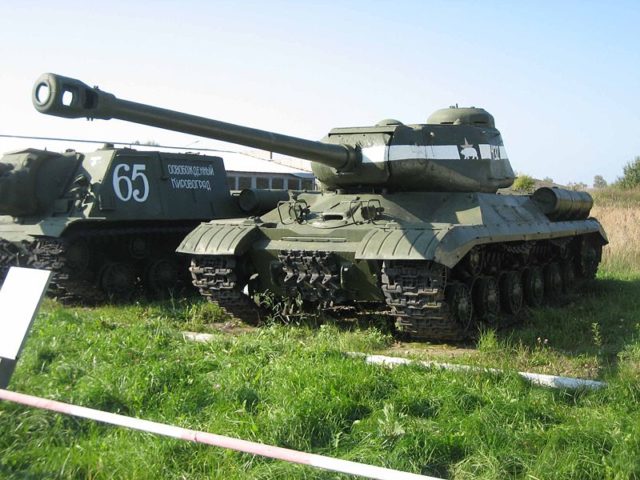
Its main strength was its large high-explosive shell, effective both against tanks and as a breakthrough weapon against fortified defenses. As the Germans were falling back and digging in at the time, it was definitely what the doctor ordered for the Soviet conquest of Berlin.
The tank’s armor was also impressive. Ranging between 60 and 110 mm it was one of the best-armored tanks at the time, providing its 4-man crew unrivaled safety within the whole Soviet armored arsenal.
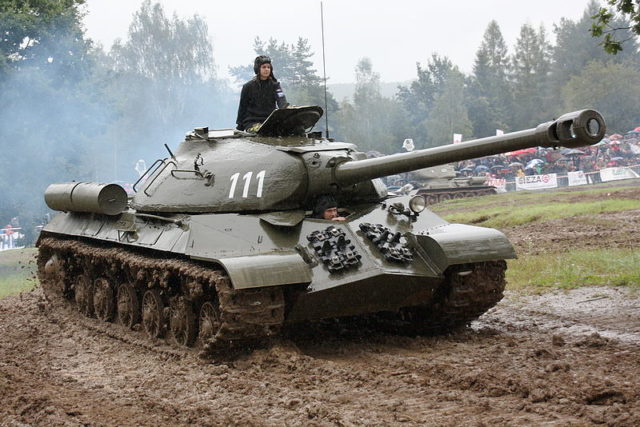
The IS-2 ran on a 12 cylinder diesel engine powered by 600 hp which moved this armored beast at a steady 37 km/h (23 mph). Although that seems very slow, the tank weighed more than 46 tons!
Its most glorious moments include the large-scale offensives of the Red Army during 1944 and the Battle of Berlin in 1945 when the IS-2 indeed spearheaded the Soviet advance.
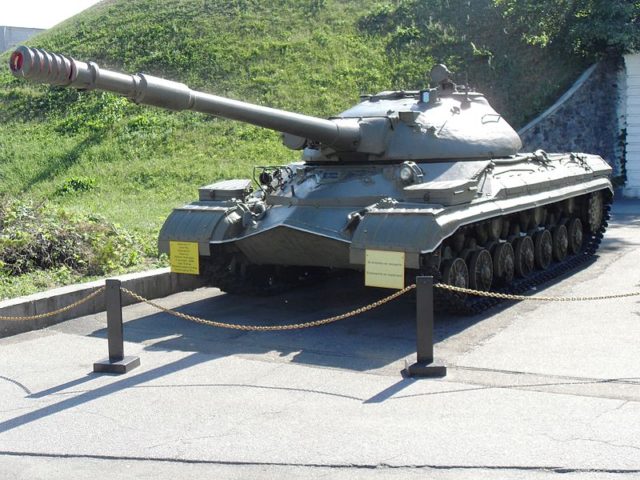
After the war, five more versions were produced, ranging in numbers from 2 to 7, except for the last one which was named the IS-10. When Stalin died in 1953, the USSR leadership distanced themselves from the controversial dictator. The IS designs were therefore changed to “T,” which was the case with IS-10, renamed T-10.
The IS-3 introduced the hemispherical turret, which became the standard for all Soviet Cold War tanks, most notable among them being the T-54.
The post-war IS tanks were improved, but it became apparent this massive tank was becoming a thing of the past. Newer models were needed for mass production, as the Cold War was beginning to heat up.
